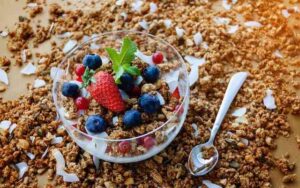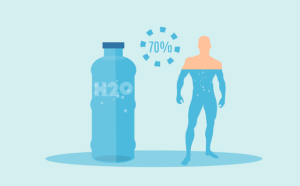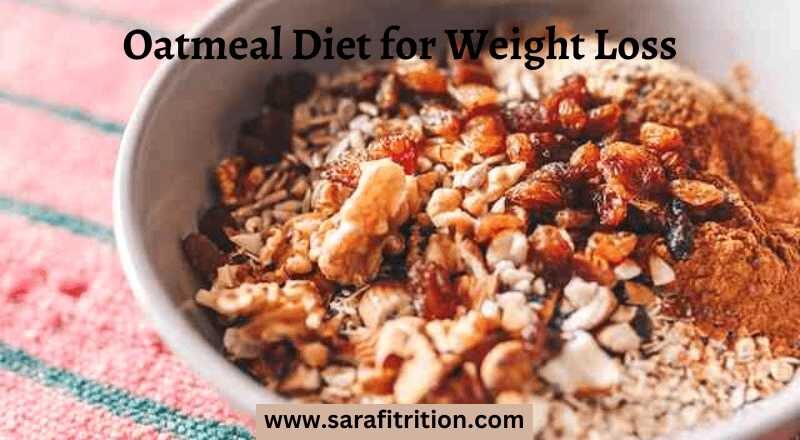Oatmeal has long been a staple in many people’s diets and is known for its many health benefits. However, did you know that incorporating it into your diet can also help you achieve your weight loss goals? In this article, we will explore the oatmeal diet for weight loss and provide you with all the information you need to know about this 7-day diet.
What is the Oatmeal Diet?
The oatmeal diet is a 7-day diet plan that incorporates it as the main source of nutrition. This diet involves eating oatmeal for breakfast, lunch, and dinner, with some snacks and drinks in between meals. The idea behind the diet is that oatmeal is a low-calorie, high-fiber food that can help you feel full and satisfied throughout the day, reducing your overall calorie intake and leading to weight loss.

How Does the Oatmeal Diet Work?
The oatmeal diet works by reducing your overall calorie intake. It is a low-calorie, high-fiber food that can help you feel full and satisfied, reducing the urge to snack on high-calorie, unhealthy foods. The high fiber content of this meal also helps regulate digestion, promoting a healthy metabolism and aiding in weight loss.
Benefits of the Oatmeal Diet
There are several benefits to incorporating oatmeal into your diet for weight loss, including:
-
Lowers Cholesterol Levels
Oats contain a specific type of soluble fiber called beta-glucan, which has been shown to significantly lower cholesterol levels. According to numerous studies, consuming beta-glucan-rich foods like oats and it can reduce both total and “bad” LDL cholesterol levels. This, in turn, can reduce the risk of heart disease and stroke.
-
Regulates Blood Sugar Levels
Oats have a low glycemic index, which means that they are slowly digested and absorbed, preventing sudden spikes in blood sugar levels. This makes them an excellent choice for people with diabetes or those trying to regulate their blood sugar levels. Additionally, oats contain fiber and protein, both of which can help regulate blood sugar levels as well.
-
Aids Weight Loss
Oats and oatmeal can be a valuable part of a weight-loss diet because of their high fiber and protein content. They keep you feeling full for longer, reducing the chances of overeating and snacking on unhealthy foods. Additionally, the slow digestion of oats can help regulate metabolism, making it easier for your body to burn fat.

-
Improves Heart Health
Oats contain antioxidants and phytochemicals that can help reduce inflammation, lower blood pressure, and improve heart health. Additionally, the high fiber content of oats and oatmeal can reduce the risk of heart disease by lowering cholesterol levels and regulating blood sugar levels.
-
Boosts Immune System
Oats and oatmeal contain important vitamins and minerals such as iron, zinc, and vitamin B6, all of which play a crucial role in boosting the immune system. By regularly consuming oats and oatmeal, you can help keep your immune system strong and reduce the chances of getting sick.
-
Rich in Antioxidants
Oats contain antioxidants such as avenanthramides, which have been shown to have a positive impact on heart health and prevent oxidative damage. These antioxidants help neutralize free radicals in the body, reducing inflammation and slowing down the aging process.
-
Good Source of Fiber
Oats and oatmeal are an excellent source of fiber, containing both soluble and insoluble fiber. Soluble fiber can help lower cholesterol levels and regulate blood sugar levels, while insoluble fiber helps keep the digestive system healthy and prevents constipation.
-
High in Protein
Oats and oatmeal are a rich source of protein, making them a great choice for vegetarians and vegans who are looking to add more plant-based protein to their diet. Additionally, the protein in oats and oatmeal can help keep you feeling full for longer, reducing the chances of overeating and snacking on unhealthy foods.
-
Versatile and Convenient
Oats are incredibly versatile and can be used in a variety of ways, making them a convenient addition to any diet. They can be used to make porridge, granola, cookies, muffins, and more. Additionally, oats are affordable and widely available, making them accessible to everyone.
Recipes

Here are three healthy oatmeal recipes that can be included in a diet plan:
Banana and Almond Butter Oatmeal:
Ingredients:
- 1/2 cup rolled oats
- 1 cup almond milk
- 1 ripe banana
- 1 tbsp almond butter
- 1 tsp honey
- 1 tsp cinnamon
- 1/4 tsp salt
Instructions:
- In a medium saucepan, bring the almond milk to a boil.
- Add the oats and salt, reduce the heat to low, and stir for about 2 minutes until the oats have absorbed the milk.
- Mash the banana and add it to the oats, along with the almond butter, honey, and cinnamon. Stir until well combined.
- Serve the oatmeal in a bowl and enjoy!
Blueberry and Greek Yogurt Oatmeal:
Ingredients:
- 1/2 cup rolled oats
- 1 cup water
- 1/2 cup fresh blueberries
- 1/4 tsp salt
- 1 tbsp honey
- 1/2 cup Greek yogurt
Instructions:
- In a medium saucepan, bring the water to a boil.
- Add the oats and salt, reduce the heat to low, and stir for about 2 minutes until the oats have absorbed the water.
- Stir in the blueberries and honey.
- Serve the oatmeal in a bowl and top with the Greek yogurt.
Peanut Butter and Jelly Oatmeal:
Ingredients:
- 1/2 cup rolled oats
- 1 cup water
- 1 tbsp peanut butter
- 1 tbsp jelly or jam
- 1/4 tsp salt
- 1 tsp honey
Instructions:
- In a medium saucepan, bring the water to a boil.
- Add the oats and salt, reduce the heat to low, and stir for about 2 minutes until the oats have absorbed the water.
- Stir in the peanut butter and honey until well combined.
- Serve the oatmeal in a bowl and top with the jelly or jam.
How to Follow the Oatmeal Diet
The oatmeal diet is a 7-day diet plan that involves eating oatmeal for breakfast, lunch, and dinner, with some snacks and drinks in between meals. Here’s how to follow the oatmeal diet:
- Breakfast: Start your day with a bowl of oatmeal, topped with fresh fruit and a drizzle of honey.
- Lunch: For lunch, enjoy a bowl of oatmeal with some fresh veggies and a protein source, such as chicken or tofu.
- Dinner: For dinner, enjoy a bowl of oatmeal with a serving of grilled or baked fish.
- Snacks: For snacks, choose healthy options like fruit, raw veggies, or a handful of nuts.
- Drinks: Drink plenty of water throughout the day and limit your intake of sugary drinks.
Tips for Success on the Oatmeal Diet

To achieve the best results on the oatmeal diet, keep the following tips in mind:
- Plan Ahead: Plan your meals in advance to ensure you always have healthy options available.
- Stay Hydrated: Drink plenty of water throughout the day to stay hydrated and promote a healthy metabolism.
- Avoid Processed Foods: Avoid processed foods, as they can be high in calories and low in nutrients.
- Get Active: Incorporate physical activity into your daily routine to help boost weight loss and promote overall health.
Conclusion for Oatmeal Diet for Weight Loss
The Oatmeal Diet is a low-calorie diet plan that emphasizes the consumption of oatmeal for breakfast and lunch, along with a balanced dinner that includes protein, vegetables, and healthy fats. Some proponents of the diet claim that it can help with weight loss, as it is filling, low in calories, and rich in fiber, which can help regulate hunger and keep you feeling full for longer periods of time.
However, it is important to note that the success of any weight loss diet depends on the individual and their ability to stick to the diet plan and make healthy choices. Simply eating oatmeal will not guarantee weight loss; it is essential to combine a healthy diet with regular physical activity and maintain a calorie deficit.

